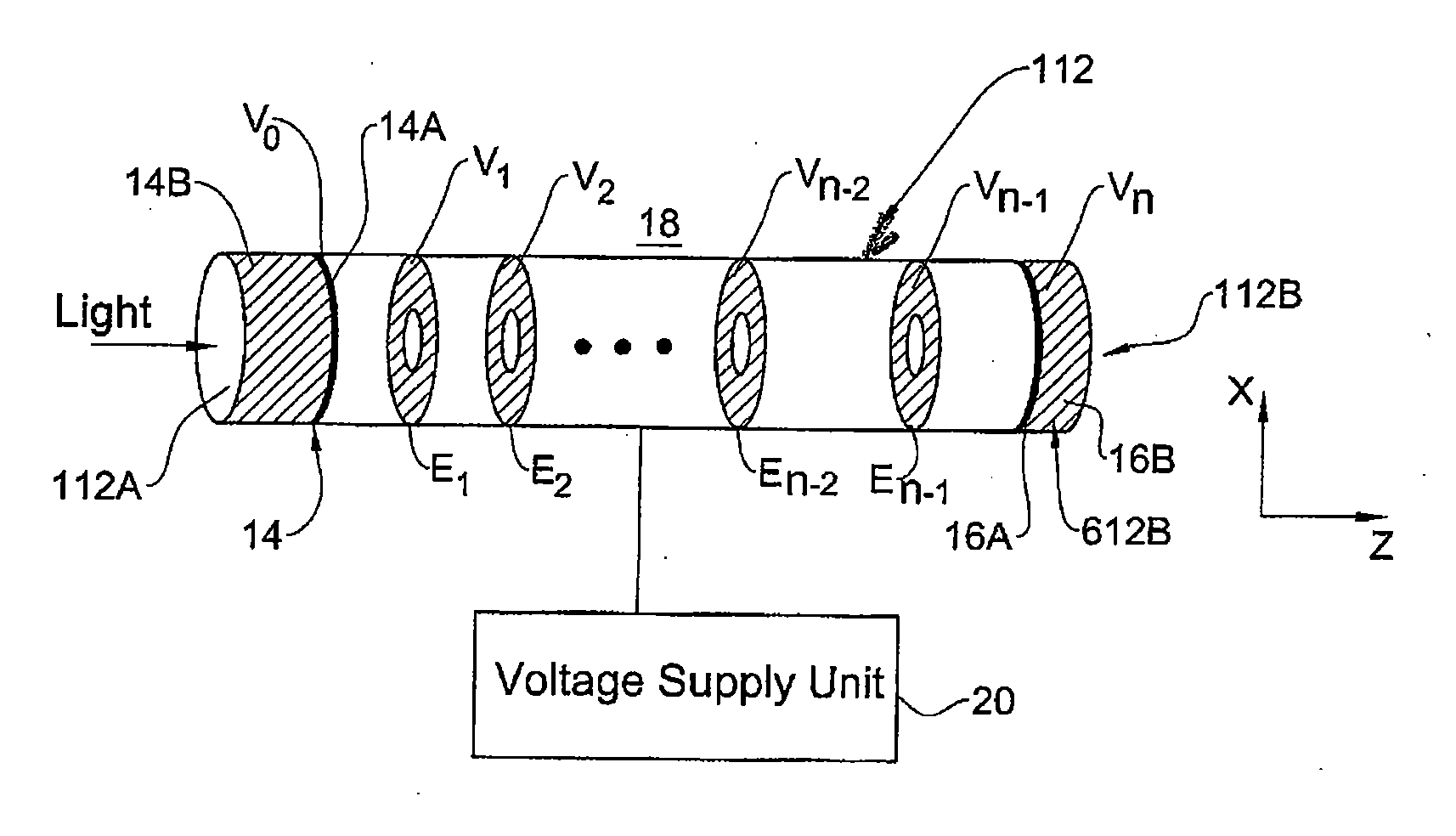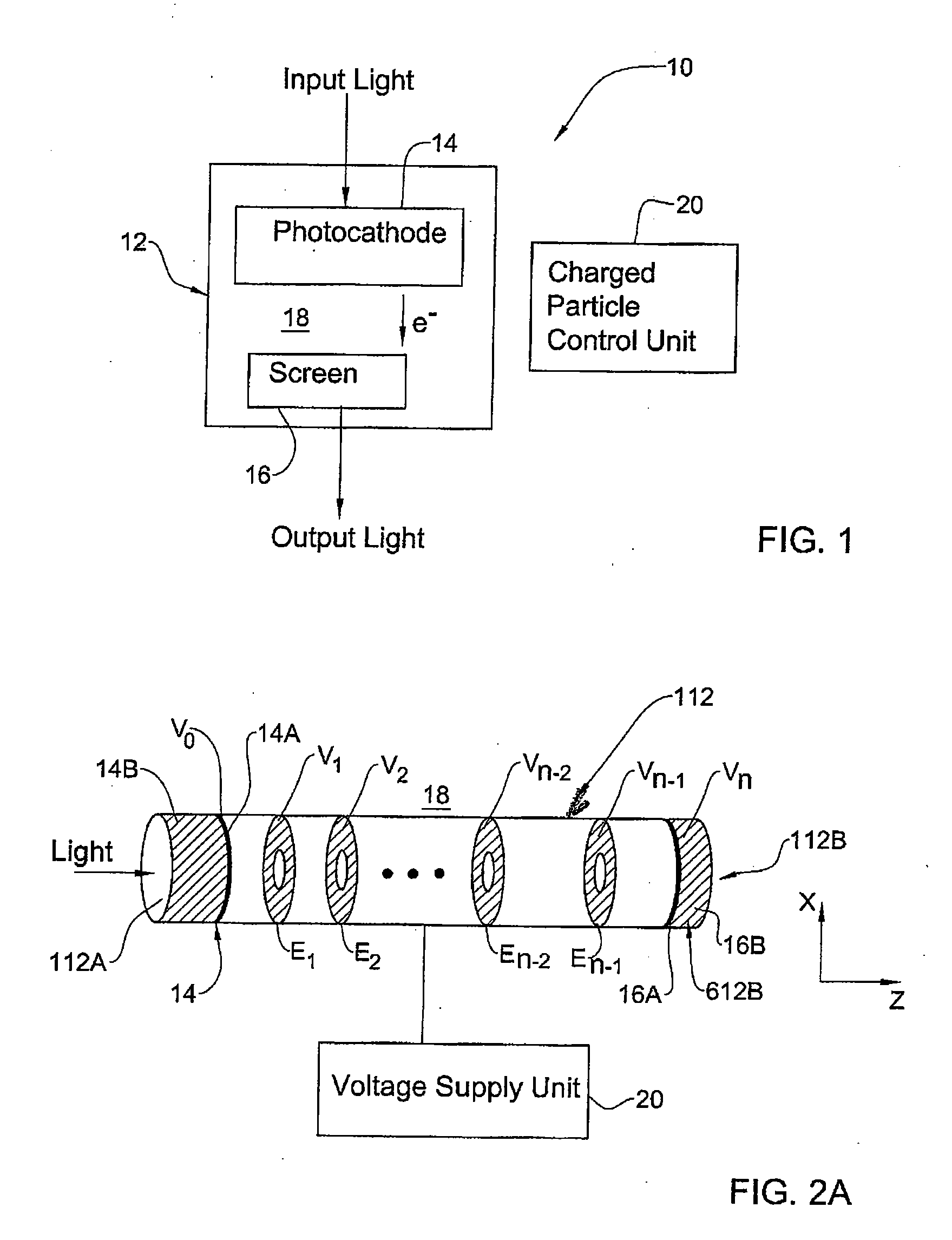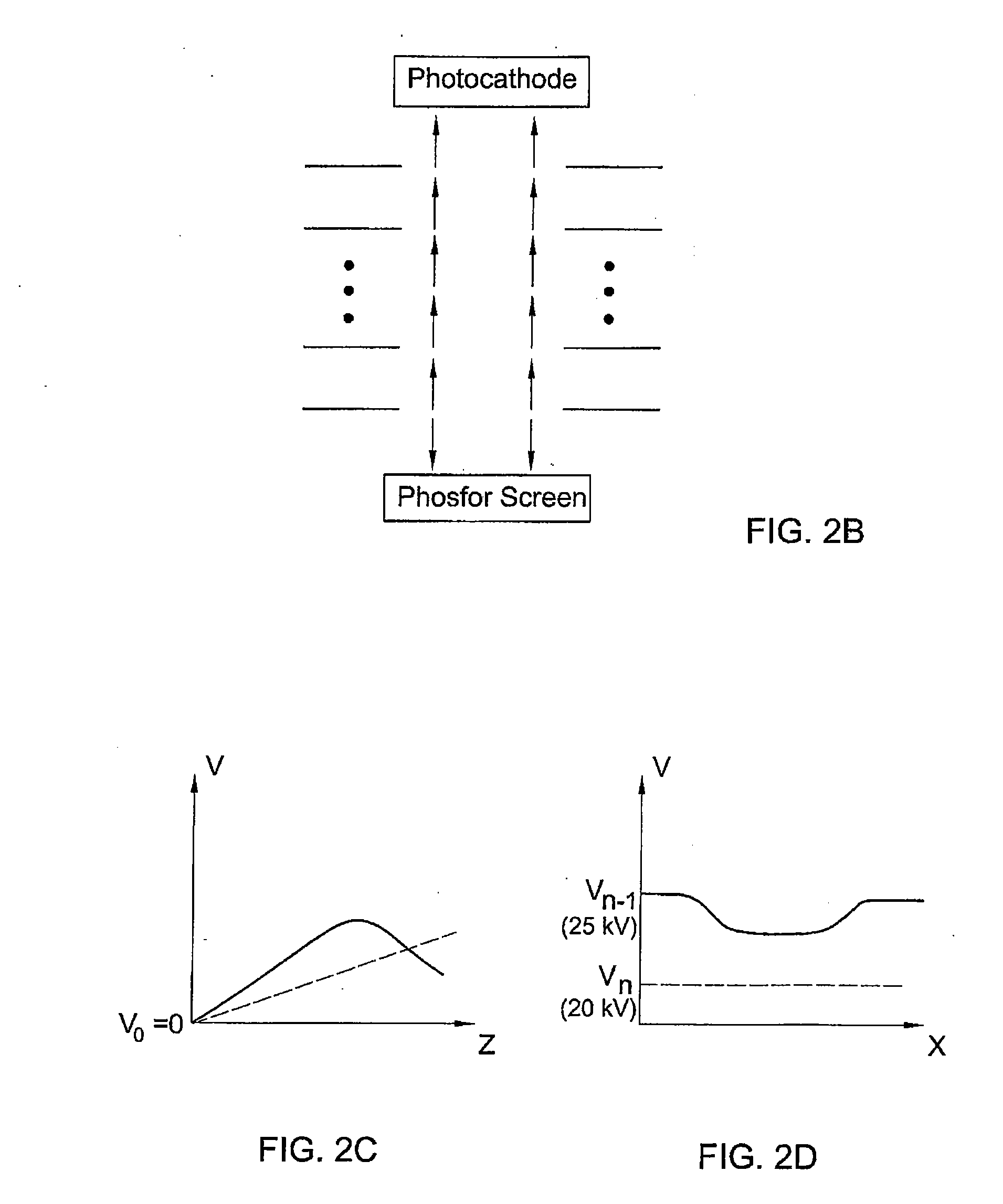Image Intensifier Device and Method
- Summary
- Abstract
- Description
- Claims
- Application Information
AI Technical Summary
Benefits of technology
Problems solved by technology
Method used
Image
Examples
Embodiment Construction
[0030] Referring to FIG. 1, there is illustrated by way of a block diagram an example of an image intensifier device 10 of the present invention. Image intensifier device 10 is configured as a magnetically focused “first generation image intensifier” device, namely includes a vacuum tube 12 including spaced-apart photocathode unit 14 (for example including a multialkali photocathode layer) and a luminescent screen unit 16 accommodated in a magnetic field region 18. Photocathode unit 14 has an active region exposed to input light to convert the input light into emitted electrons propagating through the vacuum tube and hitting the luminescent screen unit, thereby causing an intensified light output therefrom. Typically, the luminescent screen consists of a phosphor layer having a backing layer of aluminum. Typically, the electrons-to-light conversion at the phosphor screen originates ions.
[0031] Device 10 of the present invention is configured to define a charged particle control mec...
PUM
 Login to View More
Login to View More Abstract
Description
Claims
Application Information
 Login to View More
Login to View More - R&D
- Intellectual Property
- Life Sciences
- Materials
- Tech Scout
- Unparalleled Data Quality
- Higher Quality Content
- 60% Fewer Hallucinations
Browse by: Latest US Patents, China's latest patents, Technical Efficacy Thesaurus, Application Domain, Technology Topic, Popular Technical Reports.
© 2025 PatSnap. All rights reserved.Legal|Privacy policy|Modern Slavery Act Transparency Statement|Sitemap|About US| Contact US: help@patsnap.com



